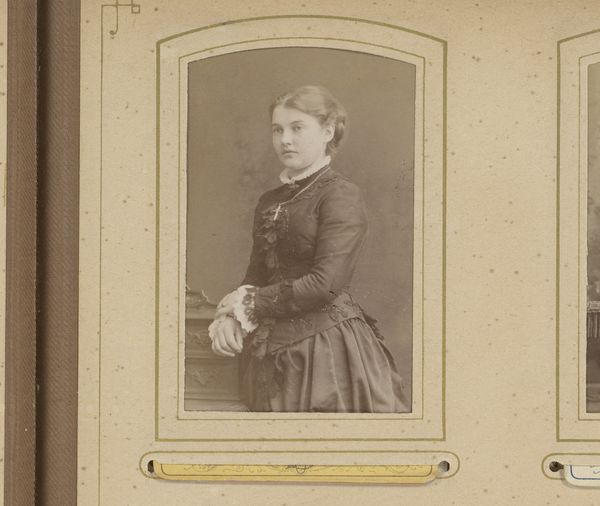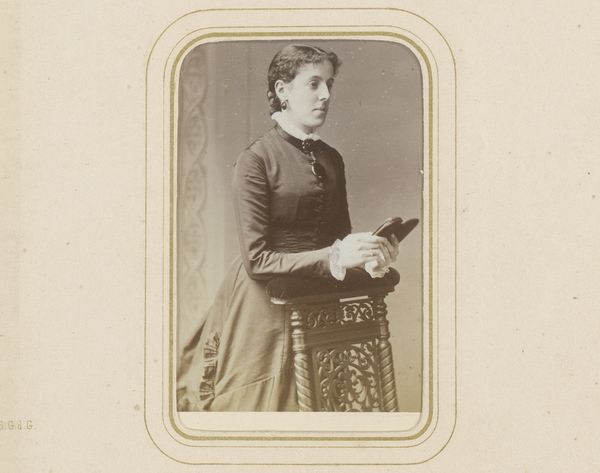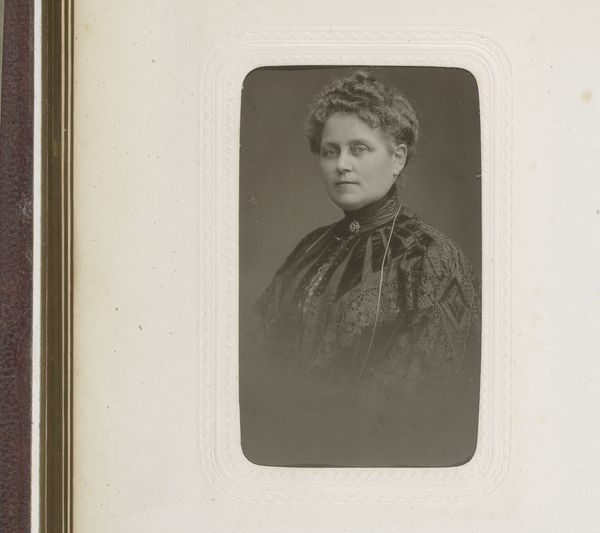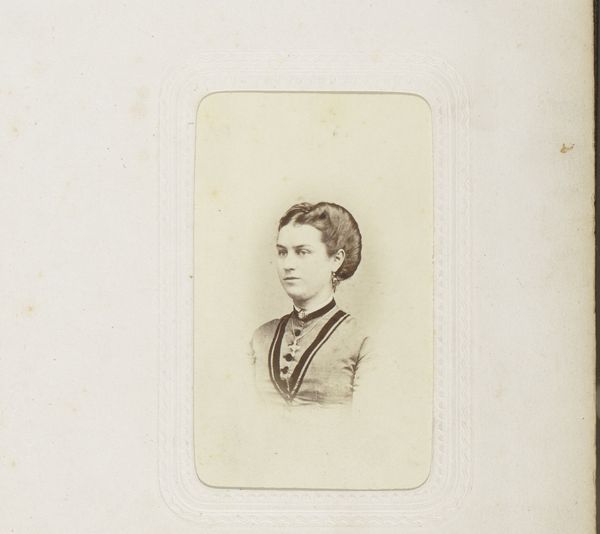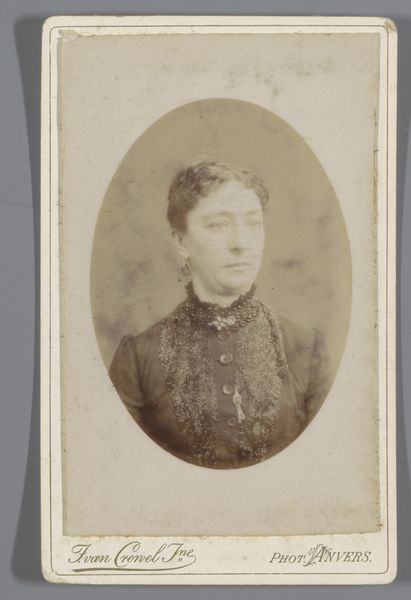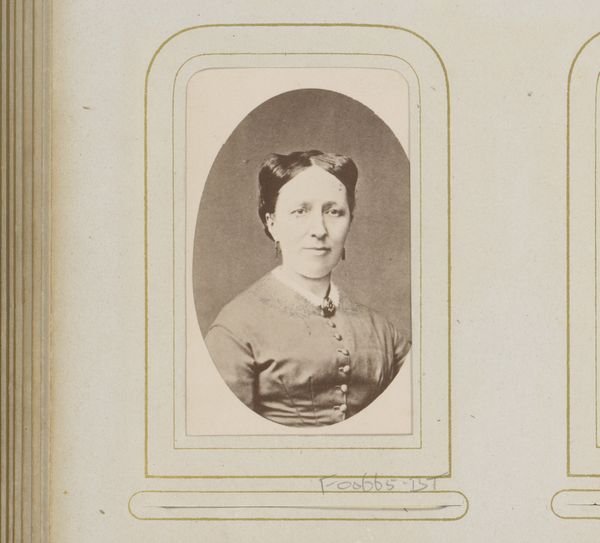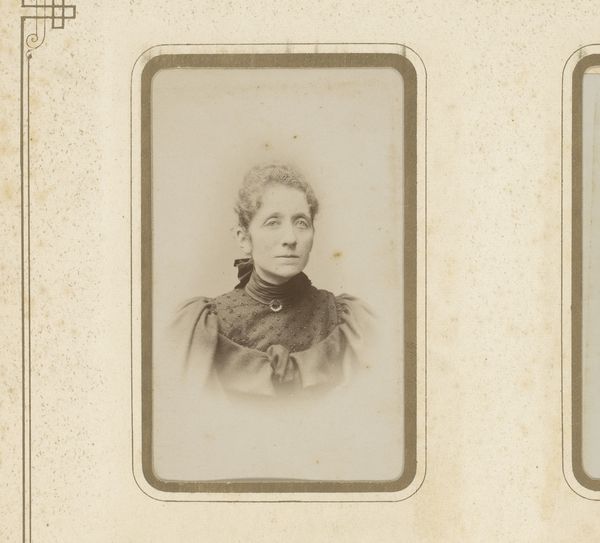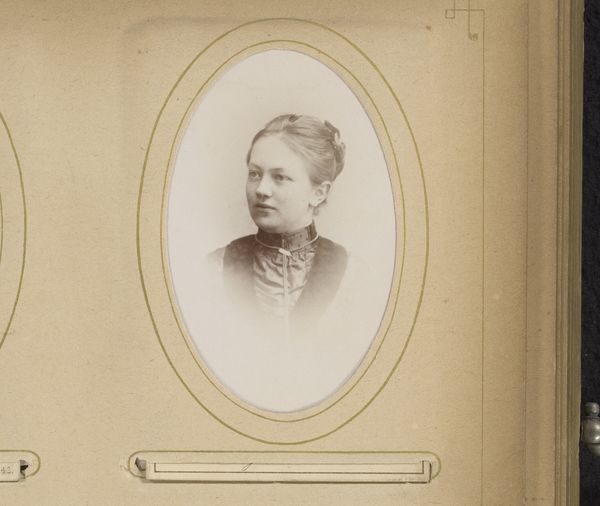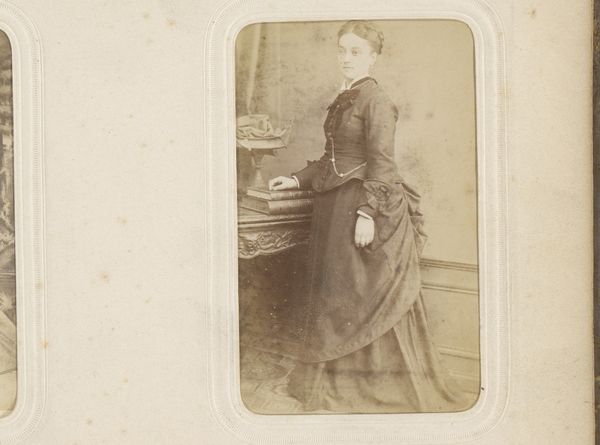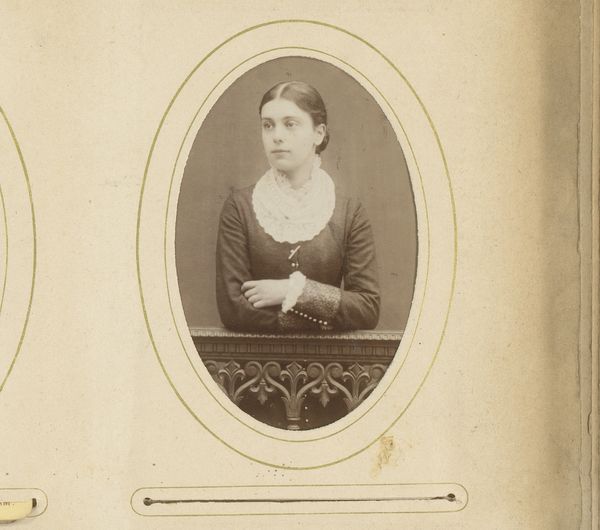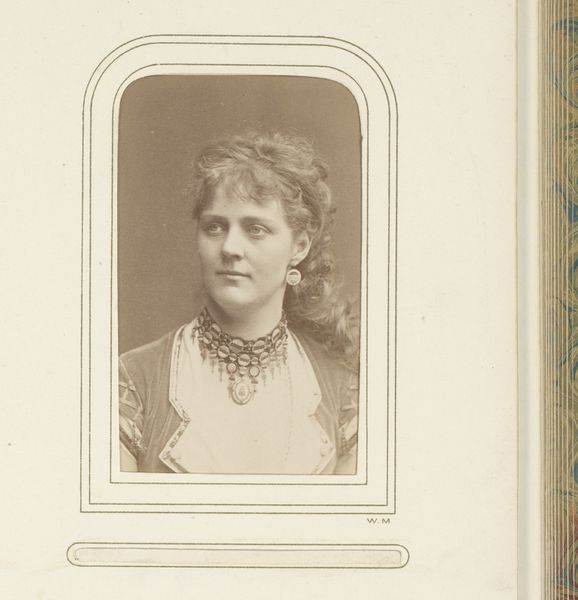
photography, gelatin-silver-print
#
portrait
#
photography
#
gelatin-silver-print
#
realism
Dimensions: height 85 mm, width 51 mm
Copyright: Rijks Museum: Open Domain
Curator: What strikes you first about this "Portret van Lotten Dorsch," a gelatin-silver print held at the Rijksmuseum and dating from around 1867 to 1885? Editor: There’s a softness to it, a gentle gaze and slightly averted posture suggesting vulnerability, maybe even a touch of melancholy. The muted sepia tones amplify that quiet mood. Curator: The softness is characteristic of photographic portraits of the era. This was the rising bourgeois class seeking to immortalize their likeness, echoing traditions previously reserved for nobility. The image also reflects the social norms dictating how women, in particular, should be seen and represented. Editor: I see that so clearly. It’s interesting how the ruffled collar encircling her neck acts almost like a protective shield, or a sign of delicate constraint, speaking volumes about the prescribed role for women in that period. Curator: Precisely. Photography studios began booming at the time. Consider the power dynamic: a male photographer directing a female subject within a rapidly changing industrial society. The portrait becomes a transaction, influenced by technological progress and social power structures. Editor: But also think of the emotional connection this image held for Lotten and her family. Beyond the pose, it would have acted as a memory trigger. The fashions, the hairstyle-- these details are deeply connected to feelings of nostalgia. This portrait holds an intimacy, acting as a lasting connection with the past. Curator: And photography provided relative affordability compared to painting, expanding the tradition of portraiture widely through society. Its rise also pushed painting to evolve and investigate Impressionism. Editor: To view it then is to delve into the social landscape and changing visual symbolism of its time. Curator: A glimpse into social class and how photography impacted notions of individual identity and societal status. Editor: Definitely more than meets the eye here, more than a fleeting portrait.
Comments
No comments
Be the first to comment and join the conversation on the ultimate creative platform.
